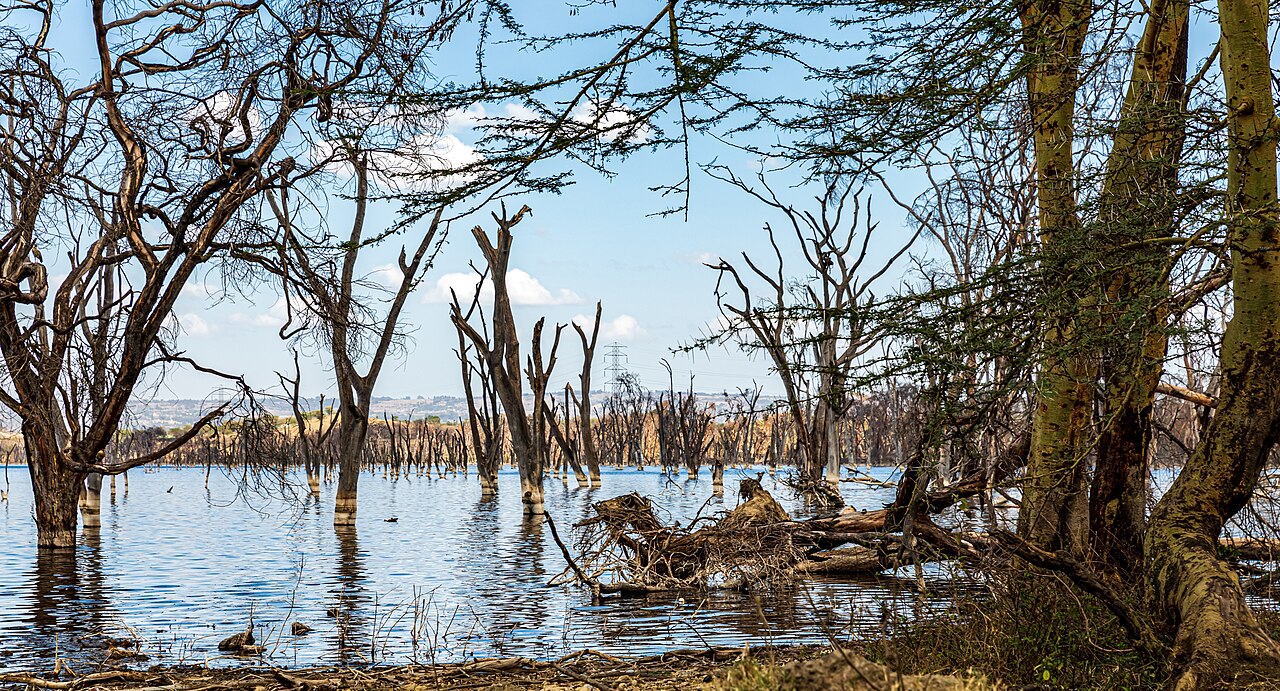Lake Nakuru National Park
Lake Nakuru National Park: A Jewel of Kenya’s Rift Valley
Lake Nakuru National Park, located in Kenya’s Rift Valley, is one of the most picturesque and ecologically significant parks in the country. Established in 1961 as a bird sanctuary, the park spans approximately 188 square kilometers, with Lake Nakuru itself covering around 40% of the park’s area. Known for its stunning landscapes, vibrant birdlife, and diverse wildlife, Lake Nakuru attracts nature lovers and adventure seekers from around the world.
A Birdwatcher’s Paradise
One of the most remarkable features of Lake Nakuru National Park is its status as a UNESCO World Heritage Site and a crucial habitat for millions of flamingos. The lake is famous for its vast flocks of lesser flamingos, which gather along the shoreline to feed on the abundant algae found in the lake’s waters. Depending on the season and water levels, the sight of thousands of flamingos painting the shoreline pink is a breathtaking spectacle that leaves visitors in awe.
In addition to flamingos, Lake Nakuru is home to over 400 bird species, making it a haven for birdwatchers. Other notable bird species include pelicans, herons, and various raptors. Birdwatching in the park is a rewarding experience, with opportunities to spot both resident and migratory species throughout the year.
Diverse Wildlife in Lake Nakuru National Park
While Lake Nakuru National Park is renowned for its avian population, it also boasts a rich diversity of wildlife. The park is home to several large mammals, including the elusive white rhino and the endangered black rhino. Conservation efforts have led to successful breeding programs for these species, making the park one of the best places in Kenya to see them in their natural habitat.
Visitors can also encounter other iconic African wildlife such as lions, leopards, buffalos, and giraffes. The park’s varied ecosystems, which include woodlands, grasslands, and the lakeshore, provide habitats for a wide range of species, ensuring that wildlife enthusiasts have plenty to see during their visit.
Scenic Landscapes and Unique Ecosystems
Lake Nakuru National Park offers stunning landscapes, characterized by its shimmering lake, rolling hills, and diverse ecosystems. The park’s elevation, ranging from 1,740 to 2,200 meters above sea level, provides breathtaking views of the lake and the surrounding Great Rift Valley.
The park is also home to unique ecosystems, including acacia woodlands and euphorbia forests. The diverse habitats support a variety of wildlife and plants, making it an excellent destination for nature walks and exploration.
Hiking and Nature Trails
For those looking to explore the natural beauty of Lake Nakuru National Park on foot, several hiking trails and nature walks are available. The Baboon Cliff viewpoint offers panoramic views of the lake and the surrounding landscape, making it a popular spot for photography and relaxation. Guided nature walks provide an opportunity to learn about the park’s flora and fauna, as well as the important conservation efforts underway to protect its biodiversity.
Conservation and Sustainability
Lake Nakuru plays a vital role in conservation efforts in Kenya. The park’s establishment as a protected area has contributed to the preservation of its unique ecosystems and the endangered species that inhabit them. Conservation programs focus on rhino protection, habitat restoration, and community engagement to ensure the long-term survival of wildlife in the region.
Sustainable tourism practices are also integral to the park’s management, with revenues from park entrance fees being reinvested into conservation initiatives and local community development. By visiting Lake Nakuru National Park, tourists actively contribute to the protection of this remarkable ecosystem.
Best Time to Visit Lake Nakuru National Park
The best time to visit Lake Nakuru National Park is during the dry seasons, which typically occur from June to October and January to February. During these months, wildlife is more easily spotted as animals congregate around water sources, and the weather is generally more favorable for outdoor activities.
The rainy seasons, from March to May and November to December, can also be a beautiful time to visit, as the park’s landscapes become lush and green, and migratory bird species arrive. However, the wet weather can make some areas of the park challenging to access.
Cultural Encounters and Local Communities
Visitors to Lake Nakuru have the opportunity to engage with the local communities surrounding the park. The Maasai and Kikuyu people inhabit the areas around the park, and cultural tours can provide insight into their traditional lifestyles, customs, and practices.
These cultural experiences not only enrich the visitor experience but also support local communities, ensuring that tourism benefits the people living near the park while promoting the preservation of their cultural heritage.
Conclusion
Lake Nakuru National Park is a true gem of Kenya, offering visitors a unique blend of stunning landscapes, diverse wildlife, and exceptional birdwatching opportunities. From the breathtaking sight of flamingos lining the shores of the lake to the chance to see endangered rhinos in their natural habitat, a visit to Lake Nakuru National Park is an unforgettable experience. As a vital conservation area and a haven for wildlife enthusiasts, the park highlights the importance of protecting our natural world while providing a memorable adventure for those who seek to explore the beauty of Kenya’s Rift Valley.




Comments are closed